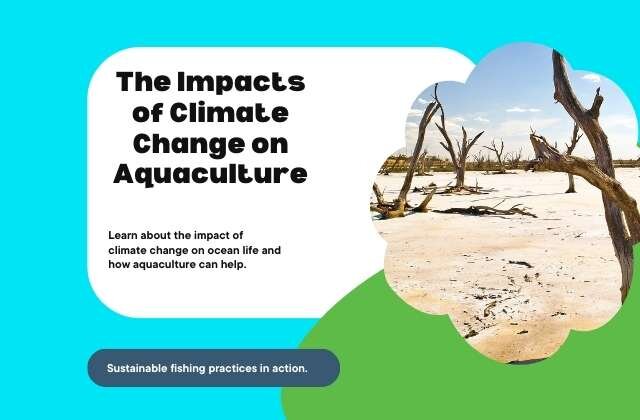
Aquaculture and Climate Change: Navigating the Future of Food Security
Introduction
Aquaculture, the farming of fish, shellfish, and aquatic plants, is a critical component of global food security. As the fastest-growing food production sector, it offers a sustainable source of protein for billions worldwide. However, climate change poses significant challenges to aquaculture, affecting its productivity, sustainability, and geographical distribution. This article explores the impacts of climate change on aquaculture and outlines strategies for adaptation to ensure future food security.
The Impacts of Climate Change on Aquaculture
Temperature Changes
Rising temperatures can directly impact the metabolism, growth rates, and reproductive patterns of aquatic species. Some species may thrive in warmer waters, while others may suffer from increased mortality rates, reduced fertility, or diseases. The geographical distribution of species is also likely to shift, affecting local aquaculture practices and species availability.
Ocean Acidification
The absorption of increased levels of CO2 by the oceans leads to acidification, which can have detrimental effects on shell-forming species such as oysters, mussels, and certain types of plankton that form the base of the aquatic food chain. This disrupts the ecological balance and can lead to reduced yields in aquaculture.
Extreme Weather Events
Climate change increases the frequency and intensity of extreme weather events, such as storms, floods, and droughts. These events can cause direct physical damage to aquaculture infrastructure and indirect impacts through changes in water quality, salinity, and the spread of pathogens and diseases.
Sea Level Rise
Rising sea levels can inundate coastal aquaculture facilities, leading to loss of land and increased salinity in freshwater systems. This not only affects the current operations but also limits the availability of suitable land for future aquaculture expansion.
Adapting Aquaculture to Climate Change
Diversification of Species and Practices
Diversifying the species farmed and adopting a variety of aquaculture practices can reduce dependency on any single species or system, making the sector more resilient to climate change. Research into breeding and selecting species that are more tolerant to temperature changes, diseases, and low oxygen levels is crucial.
Improved Management Practices
Enhancing the management of aquaculture systems can mitigate some of the impacts of climate change. This includes better monitoring and control of water quality, temperature, and disease, as well as adopting practices that reduce environmental impact, such as integrated multi-trophic aquaculture (IMTA).
Infrastructure and Technological Innovations
Investing in resilient infrastructure and embracing technological innovations can help aquaculture adapt to changing conditions. This includes the development of advanced breeding techniques, disease-resistant strains, and systems that can withstand extreme weather events.
Policy and Governance
Effective policy and governance are essential to support the sustainable development of aquaculture in the face of climate change. This involves creating frameworks that encourage sustainable practices, support research and innovation, and facilitate the sharing of knowledge and resources between regions and countries.
Climate-Smart Aquaculture
Developing climate-smart aquaculture strategies that integrate climate change adaptation and mitigation measures can ensure the sector's sustainability. This includes reducing the carbon footprint of aquaculture operations, enhancing carbon sequestration through practices like seaweed farming, and ensuring that aquaculture contributes positively to the surrounding ecosystems.
Conclusion
Climate change presents significant challenges to the aquaculture sector, but with proactive adaptation strategies, it is possible to mitigate these impacts and ensure the sector's contribution to global food security. By embracing diversity, innovation, and sustainability, aquaculture can continue to grow in a changing climate, providing nutritious food for a growing global population while protecting the health of our planet.

